Many people passing by aquariums freeze momentarily in front of the glass, seeing something unimaginable that defies any identification. Something of unknown origin that looks like a tadpole, with gills outward, splayed legs, and a goofy smile – what kind of monster is this? Meet the axolotl or water dragon. And this is just a Mexican lizard larva! Our article will be devoted to keeping an axolotl at home.
Axolotl – what is it? Translated, the word means playing in the water. The ancient Aztecs believed this was nothing more than a god who settled in a body of water. Essentially, this is an animal that, at some point in time, changed its mind about growing up. This is a neotenic larva of Ambystoma, an American salamander. The word “neoteny” means that an animal, at some point in its life, decides to slow down its development and remain at the beginning of its form. This matter is connected to a lack of certain hormones that are not activated under comfortable living conditions.
How to set up an aquarium for an axolotl
The difference between an ambystoma and an axolotl is the same as between a butterfly and its caterpillar or between a frog and a tadpole. Our animals live in the mountain lakes of Mexico at an altitude of over 2000 meters. Male salamanders are more significant than females due to their longer tails. In appearance, this lizard is stocky with beautiful bright spots all over its body. Unlike other neotenies, the axolotl belongs to the class of amphibians and reaches sexual maturity in the larval state. And with small teeth, they would instead hold prey than chew it.

The axolotl’s breathing is no less funny than its appearance. First, it has lungs. Second, there are gills that stick out, reminiscent of either a hairstyle or a crown, giving it a resemblance to a baby dragon. A serene smile was forever imprinted on the larva’s face. Perhaps this explains its popularity.

So, is this exciting neoteny your goal? Keeping an axolotl requires a spacious aquarium since future salamanders proliferate and can grow from a 7-10-centimeter larva to a 25-45-centimeter one. Neotenia does not frolic in the water like fish, and a 50-liter aquarium is quite enough for an adult specimen. Preference should be given to tanks that are elongated in length. Covering the top with a mesh lid would be best because axolotls sometimes don’t mind jumping out.

However, if you are going to breed these cute amphibians, then for one pair, you will need at least 100 liters plus the same jar where the eggs will develop and young larvae will grow. Moreover, they need to be constantly sorted. The little things develop unevenly, and the stronger ones will devour the smaller and weaker ones.
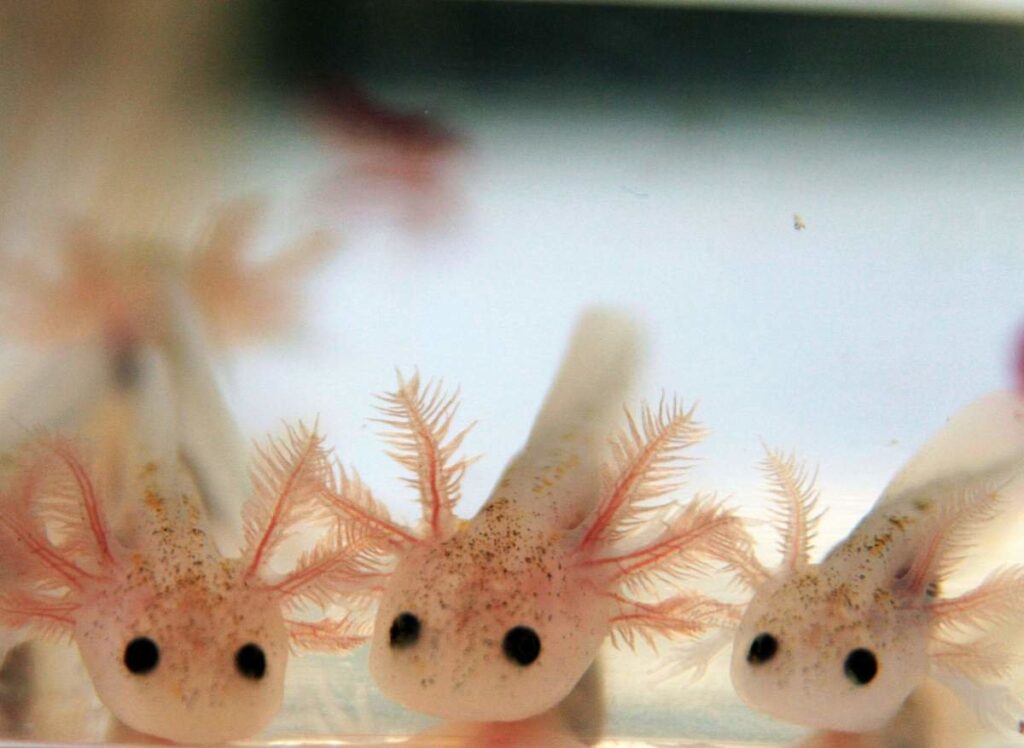
Even though it is possible to keep an axolotl in a body of water that is small compared to its size, they produce quite a lot of waste. And the slightest contamination of water negatively affects the animal. Therefore, filtration and aeration of water in an aquarium is mandatory. With good aeration, the gills of neoteny will be bright and beautiful. But the weekly replacement of a quarter of the volume is still ongoing. Once every month or two, it is recommended to change the water completely.
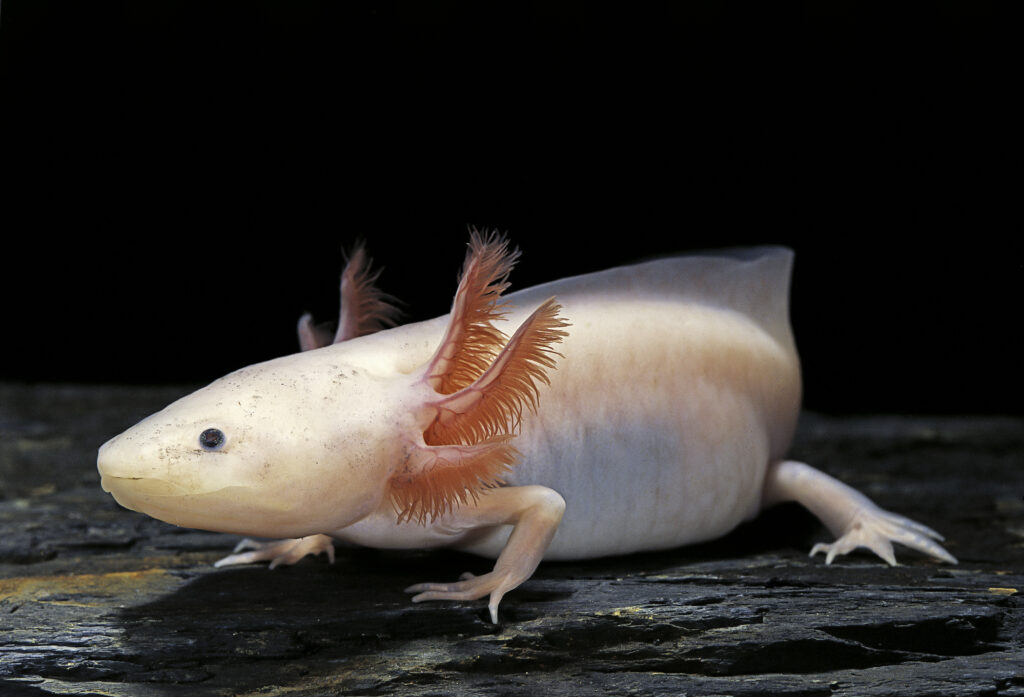
However, creating a flow is undesirable. If you notice that the inhabitants seem to be playing with bubbles of water, they either have already experienced it or will soon be stressed. The axolotl cannot boast of vision; it sees only the outlines of moving objects. In his understanding, everything that moves is food. And if the dragon doesn’t receive anything, it gets stressed.

The soil for an axolotl can be either large pebbles, which he will not mistake for something edible, or wonderful sand, or you can lay a “blend” on the bottom. Collecting food particles from the bait is easy, and you can quickly clean the bottom of the aquarium with it. However, this option is uncomfortable for the animal because it will have nothing to cling to when moving. Therefore, the best solution is sand.
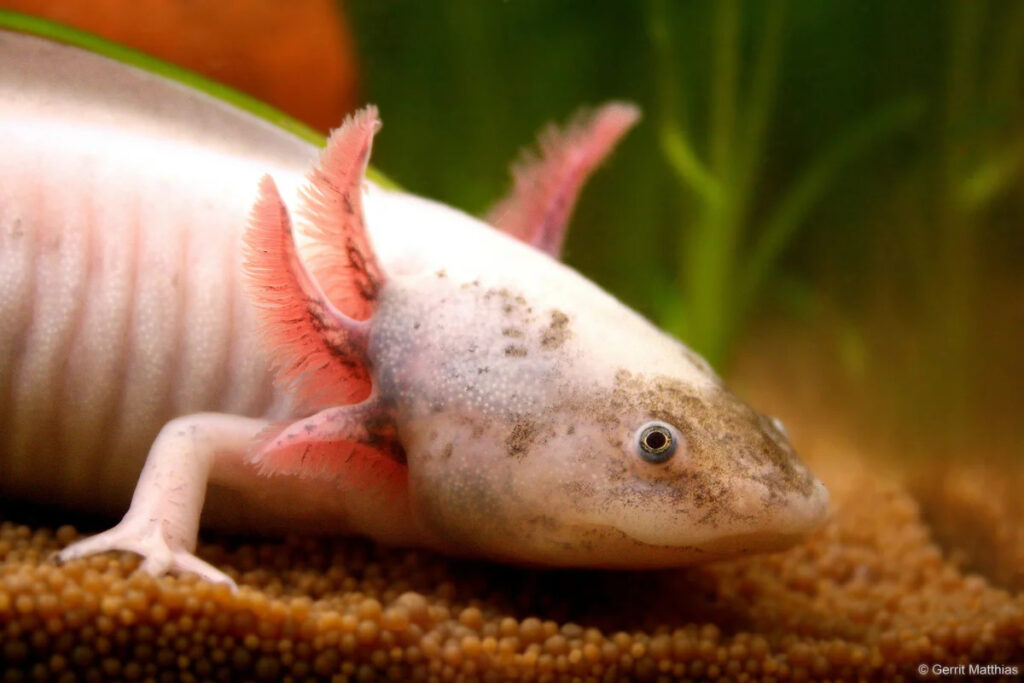
Axolotls do not like bright light and need shelter. However, everything in the aquarium should not have sharp edges, as the larva’s very delicate skin can be easily damaged.
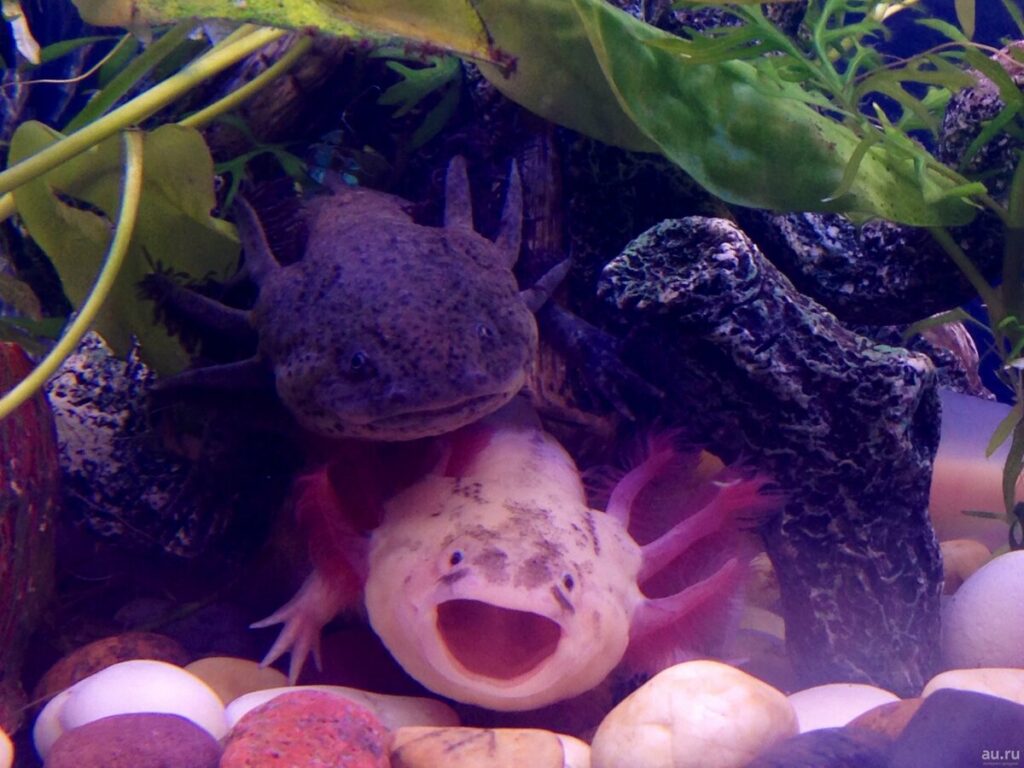
With all these arrangement delights, the axolotl needs cold water from about 10 to 21 degrees. So, you will also need to purchase a cooler, if you don’t mind. Monitor the temperature because, in warm water, the food in the amphibian’s stomach is not digested; it rots, and the animal may die.
What about the transformation of a larva into a salamander? At home, the transformation of an axolotl can occur when conditions worsen: a decrease in water level or pollution (if it does not die before that). If you have set such a goal, then you need to create the appropriate conditions, plus you may need injections of particular hormones. However, all this is very difficult, and if you are not an expert, then do not torture the animal, which may simply die from these manipulations.

Several species of pre-salamanders have varying skin tones. Spotted, white, albino, yellow, and brindle forms look attractive. Thanks to genetic engineering, an aquarium axolotl has been created that glows in the dark, not by itself but under the influence of fluorescent lamps.



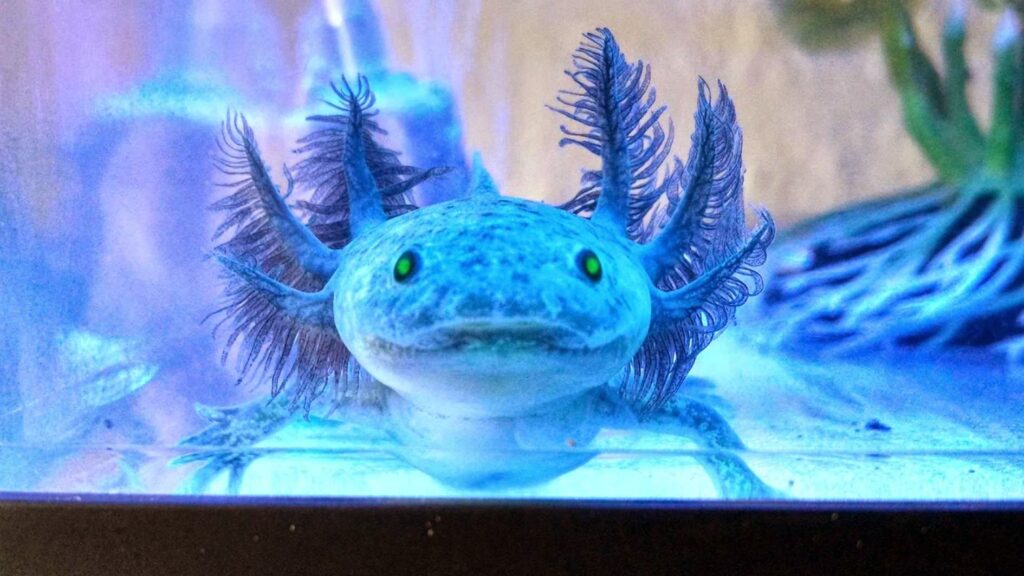
You probably know that the axolotl can regenerate almost any part of its body. This ability is unique, so he is an object for scientists who dream of revealing this secret, which would be very useful to humanity.
How and what to feed an axolotl at home
Here, you can rest a little, since young neotenies are fed once every three days, and adults can be fed once a week. The axolotl lizard, for all its smiling appearance, is a predator. But you can feed it only with aquatic creatures: fish, shrimp, mussels, bloodworms. Aksik will not be able to digest mammalian meat.

Due to the peculiarity of the eyes’ structure, the “under-lizard” can only look up and sees only moving objects. Everything that falls to the bottom will be safely spoiled. How, then, to feed the axolotl? Frozen bloodworms, fish fillets, mussels, and other food are given with tweezers, and you will need to move the prey and watch how joyfully the amphibian grabs it.
Keeping an axolotl at home with fish
Animals such as axolotl and fish are practically incompatible concepts. The fact is that the water dragon, although a predator, is too gentle. Most owners keep their axolotls entirely alone in the aquarium. And there are good reasons for this.
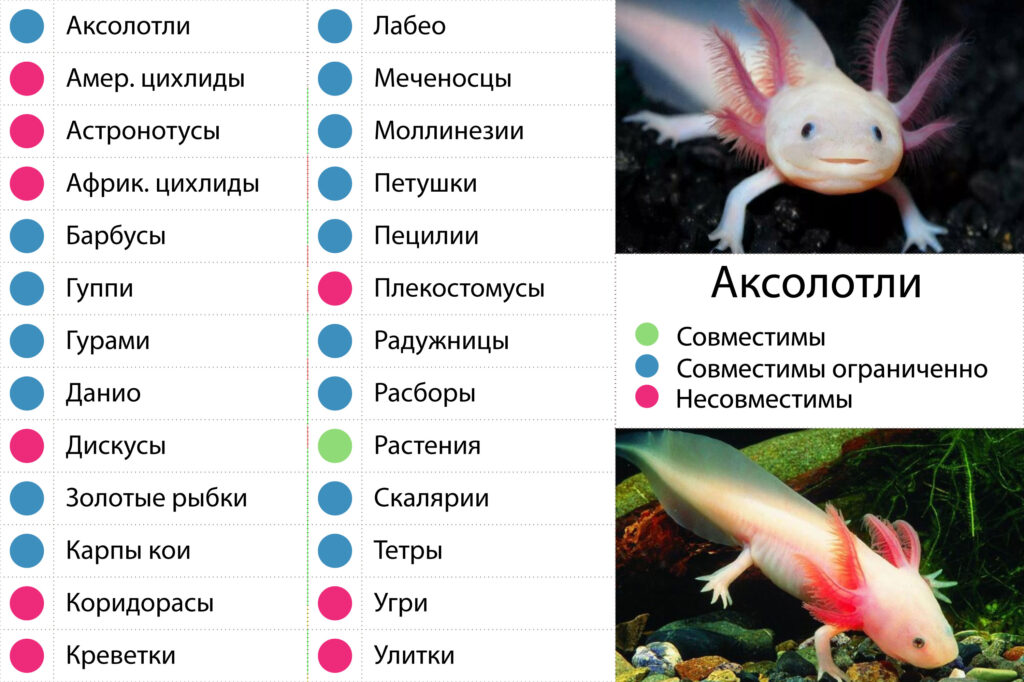
Neoteny gills. The respiratory organs of aksiks stick out, and even the most peaceful fish cannot resist trying to pull the amphibian by the villi. As a result, instead of fluffy horns, only pathetic shoots will remain.
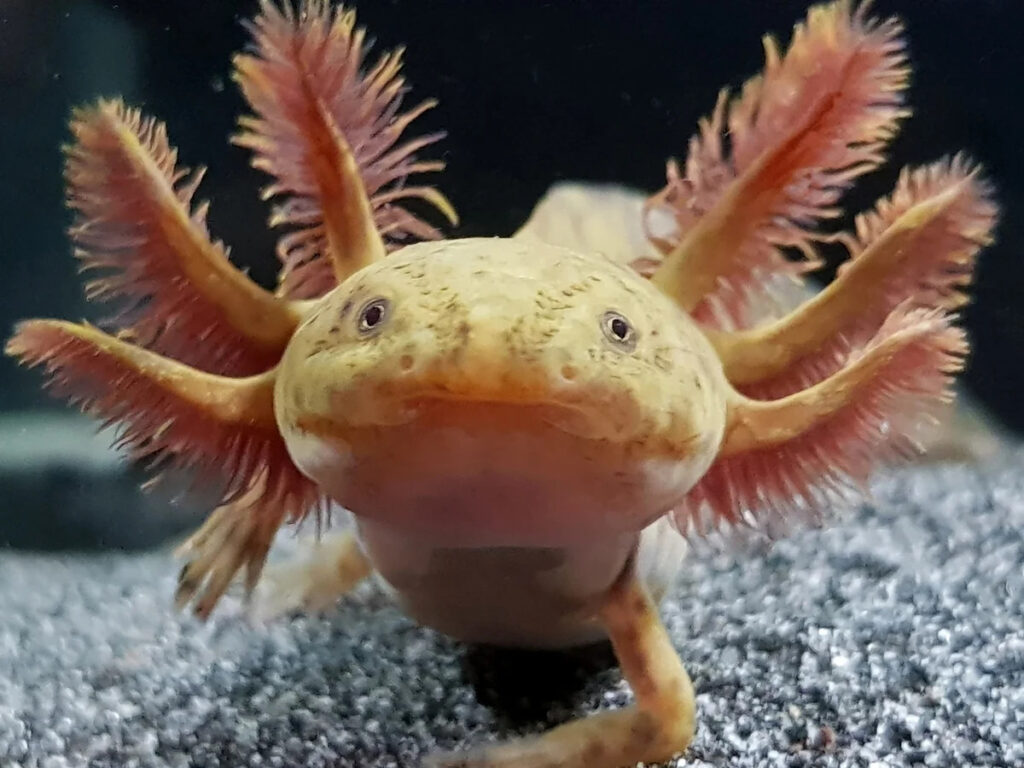
Night predator. The axolotl is a nocturnal amphibian. In the dark, dozing daytime, fish will become a target for the blind dragon. If the fish is large, it is almost impossible to select a species that is peaceful and also lives in cold water.
Snails and shrimp—it would seem—this is it! But no, I’m just simply going to disappoint. The axolotl’s skin has a layer of mucus that even a harmless snail can damage, causing abrasions on the aquarium axolotl. And there is nothing to say about shrimp, which can severely injure an aksik.
There is only one type of neighborhood left – the goldfish. She also lives in cold water and is peaceful and clumsy enough to cause any damage to the under-salamander.
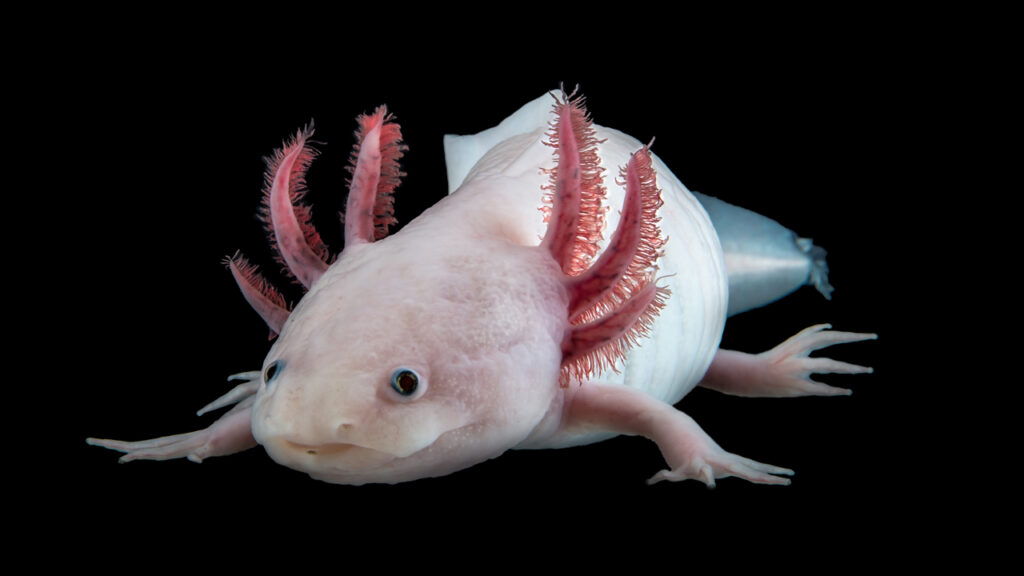
The axolotl is a rather strange-looking larva, which is precisely why it attracts us. The decision to get a salamander in the form of an axolotl is a very original step that will require a lot of effort from you to create acceptable conditions for the existence of the animal.
Video: A,” ll about axolotl




